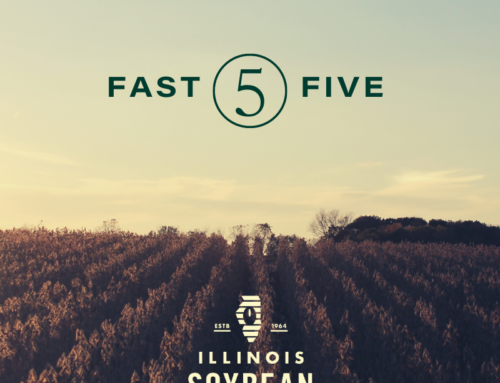Hosting International groups on our farm is centered around a discussion, rather than a presentation. The time spent on farms with a group can be invaluable, if well done, in sharing the goals and expectations of each side with the end goal of increasing sales. After a recent European Union (EU) buyers’ group visit, as a team, we honed in on the transparency in our domestic supply chain. My lesson was the utter frustration they experience at navigating impending EU sustainability-based rules such as the Deforestation Regulation. Little did I know that a scheduled trip to Rotterdam, Netherlands, and Antwerp, Belgium in early September would strengthen the case for U.S. soybean sustainability documentation AND sustainable transportation.
The Illinois Soybean Association has many close partnerships with producer-based groups that have very specific areas of focus in the soybean world. I serve as the ISA Board representative to the Specialty Soya and Grains Alliance (SSGA) primarily because of my interest in the food-grade soybeans produced on my farm and shipped overseas. Most Board Directors take on additional roles with responsibilities through external organizations to ensure that an Illinois producer voice is carried throughout the agricultural industry.
Global transportation is a vital piece of soy trade, and a growing concern because of disruptions along the Mississippi River, as well as the Panama and Suez Canals. As an industry, we must ensure resiliency and diversification in our shipping methods. SSGA’s goal in Rotterdam and Antwerp was to open dialogue with importers and exporters about shipping through the Great Lakes and exit through the St. Lawrence Seaway. Until this point, I had never thought about the challenges with the supply chain and needing an empty vessel at a US port waiting to take on bulk or containerized grain from Illinois. Yet, I was then placed in front of groups of shippers in the EU pleading our case to reconsider the St. Lawrence Seaway as a profitable option for their boats.
I spoke to points of bulk shipments of grain and containers that can go from the Port of Milwaukee to Rotterdam in only 15 days. This is a significant factor in this quick transit time due to hands free mooring systems at all locks that have been in use since 2019. This system increases safety, lowers shipping costs and is faster. Efficient travel is sustainable travel. On the farm, this would be like driving up to a dump pit in the fall, unloading and elevating the grain, and never leaving the truck cab to unload your grain.
Containerized grain out of the Great Lakes appears to be the driver of expansion on this trade route as it has potential for better data tracking from farm to destination. Updating US infrastructure to accommodate increased efficiency with containers is coming online but takes time and investment. However, with continued efforts our adding new trade routes can only be a win for Illinois and Midwest grain producers.

